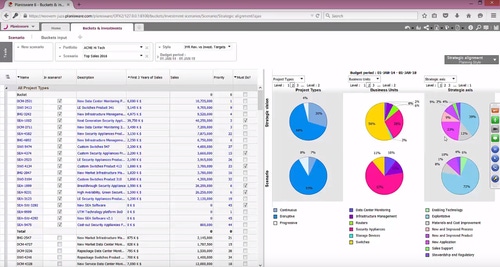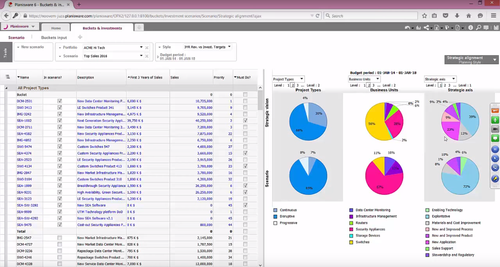Portfolio Management Tools Give Decision-Makers Line of Sight Into R&D Efforts
June 15, 2016

How does a large manufacturer keep track of all its product development and R&D efforts across the enterprise? This is a crucial question, because decision-makers have to make sure that money and resources are going into the right mix of new technologies and products, so that the overall portfolio yields enough profit in the long-term. Complicating this portfolio-management task is the fact that projects tend to exist at various stages of development and maturity, and are often spread across the organization in many different departments, business units, and functional areas.
The most successful R&D-driven enterprises use portfolio-management tools to provide a line of sight into all of the company's product development efforts, so as to make optimal decisions around funding. Portfolio management experts tell Design News that such tools are essential to gaining the necessary transparency, but that the right processes and organizational mindset are just as important.

PPM (project and portfolio management) solutions (a.k.a. enterprise project and portfolio management, or EPPM) typically include such capabilities as pipeline management, resource management, inventory, change control, financial management, and risk control for continuous management of project uncertainties. Many solution developers have fielded products in the PPM space, including Hewlett Packard Enterprise; Unicon Systems through its Focal Point solution; Oracle, with its Primavera Portfolio Management; Planisware; PwC, through its Project Portfolio Optimization offering; SAP with its Portfolio and Project Management solution; and Siemens, through its product lifecycle management-oriented Teamcenter platform.
In an interview, strategy consultant and Columbia Business School professor Rita Gunther McGrath said that a portfolio-management strategy should provide "a visualization of what people are working on," tying "the different kinds of projects to their strategic outcomes, to sum up whether you're investing in things that make a strategic contribution."
She said that "you need some way of capturing data all the way to the level of the project." But she admitted that "at the operational level it's often very hard to get ahold of that data, because it's trapped in individual minds and spreadsheets. With most companies it's an exercise in pen and pencil, PowerPoint, and meeting agendas. At the level of the project team, everybody's just so busy that it's hard to take the time out to make that data accessible."
Just buying a PPM solution won't magically solve an organization's challenges around the funding of R&D projects, warns Lee Merkhofer, formerly a partner and decision analysis expert at PricewaterhouseCoopers (PwC) and now a PPM consultant. The reality, he writes in a paper on PPM tools, is that "the necessary model for valuing projects needs to be different for different customers, because what customers need from their projects to be successful differs, even for similar organizations within the same industry."
READ MORE ARTICLES BY AL BREDENBERG ON DESIGN NEWS:
The value of a project to any given company, says Merkhofer, can only be arrived at through careful analysis of the needs of the business and the way each project in the portfolio addresses those needs. "Importantly," he says, "the value of a project cannot be estimated without understanding the willingness of the organization to make tradeoffs, including its risk tolerance." This means that the provider of a PPM software tool needs to be more than just a good salesperson: "The customer must ... devote necessary effort to working with the software supplier to obtain a model that is capable of capturing the appropriate sources of project value."
Merkhofer also stresses that effective PPM is not really about "making project-by-project choices based on fixed acceptance criteria." It's about managing the overall portfolio. It's true, he says, that with PPM, "new projects are formally evaluated, prioritized, and selected; existing projects may be accelerated, slowed, or terminated; and resources are allocated and reallocated." However, the big-picture objective of PPM is similar to that of portfolio management in financial investing: "Decisions to add or subtract projects from the portfolio are based on the impact on total value to be derived from the project portfolio."
Research firm IDC pegs market growth in the PPM software category at a healthy growth rate of 5.8%, set to reach $4.9 billion in 2019, up from $3.7 billion in 2014. IDC analyst Melinda Ballou comments that "Global 2000 organizations continue to struggle with the complexity of project, program, and product delivery while seeking to manage economic and political volatility as operational and business needs change and swirl dynamically." To meet this challenge, she stresses, "Agile management of human, financial, and other resources is key."
[image via Planisware]
Al Bredenberg is a writer, analyst, consultant, and communicator. He writes about technology, design, innovation, management, and sustainable business, and specializes in investigating and explaining complex topics. He holds a master's degree in organization and management from Antioch University New England. He has served as an editor for print and online content and currently serves as senior analyst at the Institute for Innovation in Large Organizations.
About the Author(s)
You May Also Like





